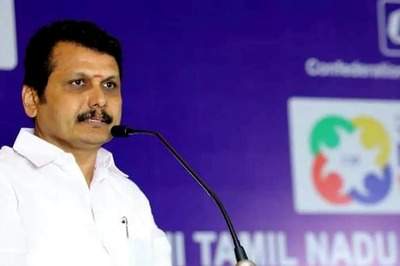
views
The government received at least 61,100 reports of financial fraud involving digital payments in May, indicating that there has been a major increase in such scams.
According to data shared by officials, more than half of these complaints (33,712) were over the Unified Payments Interface (UPI), which was followed by 10,898 complaints about frauds involving debit or credit cards or SIM card switching.
The remaining scams included internet banking frauds (7,099), fraud or voice phishing calls (5,503), e-wallet thefts (3,010), Demat account scams (769), and email takeovers (187).
While the 61,178 cases in the 30-day period equate to just over 2,000 cases per day, a source familiar with the situation told Hindustan Times the numbers are higher than the reported cases, which have been averaging about 2,500 per day for the past three months.
It was also revealed that there were 3,500 cases reported on June 9 alone.
The cases averaged roughly 1,500 per day in 2021 and the number of cases recorded every day has nearly doubled, as per the report which also stated that the breakdown for 2021 and other months of 2022 could not be found right away.
The figures come from complaints filed with the government’s cybercrime portal.
However, last week, India’s National Security Council Secretariat, led by Lt General Rajesh Pant, held a meeting to consider methods to prevent the rise that was attended by senior officials from the ministry of home affairs, National Payments Corporation of India, and the Reserve Bank of India.
It is noteworthy that in FY 22—till 28 February this year—digital transactions in India increased by 33% to 7,422 crore transactions, with UPI accounting for Rs 452 crore transactions worth Rs 8.27 lakh crore.
It has been highlighted several times that frauds are on the rise as digital payments become more popular.
As per other reports every month, such frauds are committed through UPI, with UPI accounting for 50% of all financial frauds through various mechanisms such as luring customers to make payments to unauthorised QR codes or gaining confidence to install malware and forcing customers to use the unauthorised app.
Furthermore, fraudsters are becoming increasingly clever, apart from SIM cloning or swapping for receiving OTP on the fraudster’s phone employing techniques such as sending harmful QR codes, malicious apps, user impersonation, and more. Ironically, bad actors perpetrate these crimes by utilising the very tools that were created to help consumers find better answers.
So concerns about online digital payments among the people are genuine, given the rise in fraud, the lack of a sufficient infrastructure to identify or prevent such incidents, and the lack of a redress mechanism.
Read all the Latest News , Breaking News , watch Top Videos and Live TV here.



















Comments
0 comment